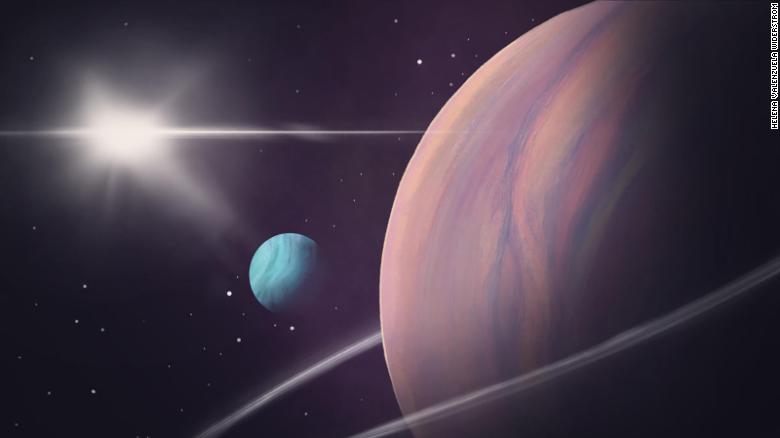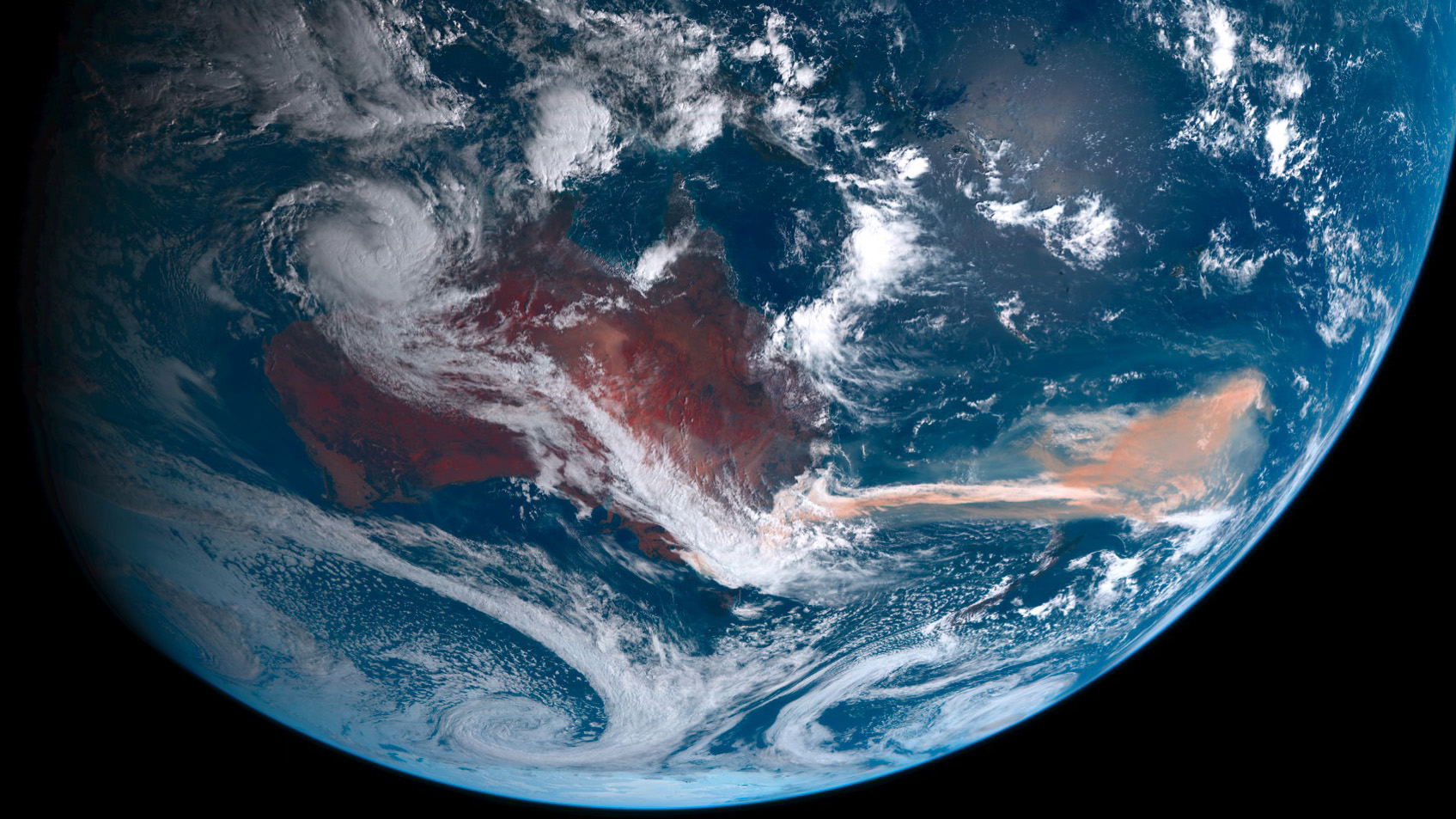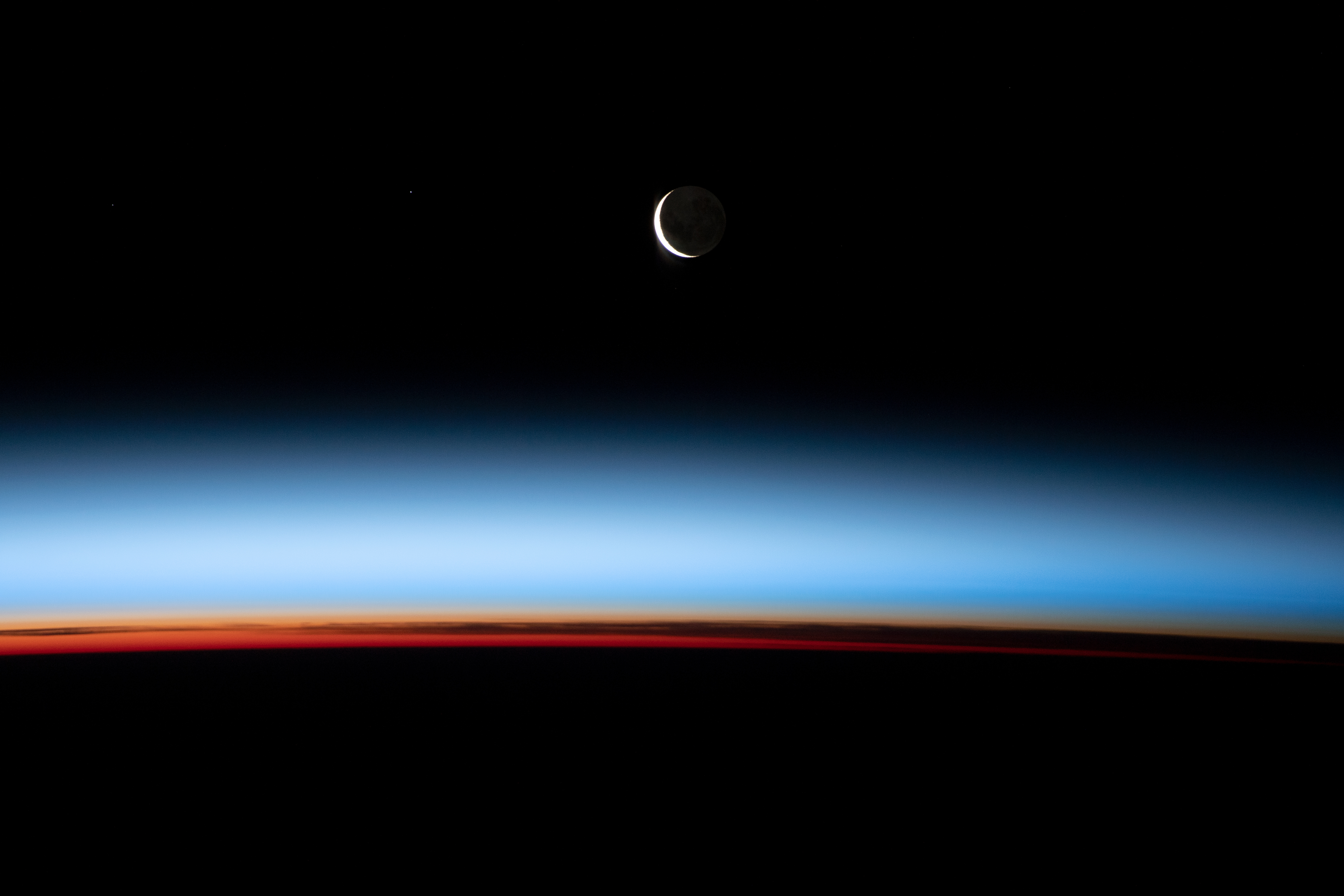Astronomers may have found a moon that's completely different from anything in our solar system.
It's only the second space object discovered that may be an exomoon, or a moon outside of our solar system. The giant moon was found orbiting a Jupiter-size planet called Kepler 1708b, located 5,500 light-years from Earth.
A study detailing these findings published in the journal Nature Astronomy.

The newly detected celestial body is 2.6 times larger than Earth. There's no analog for such a large moon in our own system. For reference, our own moon is 3.7 times smaller than Earth.
It's the second time that David Kipping, assistant professor of astronomy and leader of the Cool Worlds Lab at Columbia University, and his team have found an exomoon candidate. They discovered the first one, a Neptune-size moon orbiting a giant exoplanet called Kepler-1625b, in 2018.
"Astronomers have found more than 10,000 exoplanet candidates so far, but exomoons are far more challenging," Mr Kipping said in a statement. "They are terra incognita."
Understanding more about moons, such as how they form, whether they could support life, and if they play a role in the potential habitability of planets, could lead to a greater understanding of how planetary systems form and evolve.
Hard-to-find objects
Mr Kipping and his team are still working on confirming that the first candidate they found is actually an exomoon, and this latest discovery will likely face the same uphill battle.
Moons are common in our solar system, which has more than 200 natural satellites, but the long search for interstellar moons has largely been unfruitful. Astronomers have had success locating exoplanets around stars outside our solar system, but exomoons are harder to pinpoint because of their smaller size.
More than 4000 confirmed exoplanets have been discovered across the galaxy, but that doesn't mean finding them was easy. Many of them have been detected using the transit method, or looking for dips in starlight when a planet passes in front of its star. Spotting moons, which are smaller and cause even more diminutive dips in starlight, is extra difficult.
LIVE UPDATES: Rival says Novak Djokovic making vaccinated stars 'look like fools'

To find this second potential moon, Kipping and his team used data from NASA's retired planet-hunting Kepler mission to survey some of the coldest gas giant exoplanets the telescope found. The researchers used this criteria in their search because in our solar system, the gas giants Jupiter and Saturn have the most moons orbiting them.
Out of the 70 planets they studied, only one revealed a companion signal that appeared to be a moon, with only a one per cent probability of it being something else.
"It's a stubborn signal," Mr Kipping said. "We threw the kitchen sink at this thing but it just won't go away."
Three ways a moon could form
The newly discovered candidate shares similarities with the first potential exomoon discovery. Both are likely gaseous, which accounts for their massive size, and they are far from their host stars.
READ MORE: Probe finds 'unintentional mistakes' in Petito police stop

There are three primary theories about how moons form. One is when large space objects collide and the blasted-off material becomes a moon. Another is capture, when objects are captured and pulled into orbit around a large planet -- such as Neptune's moon Triton, which is believed to be a captured Kuiper Belt object. And the third is moons forming from the materials, like gas and dust swirling around stars, that created the planets in the early days of the solar system.
It's possible that both exomoon candidates started out as planets that were eventually dragged into orbit around larger planets like Kepler 1625b and Kepler 1708b.
Giant moons are likely an anomaly
Mr Kipping believes it's unlikely that all moons outside of our solar system are as large as these two candidates, which may make them the oddballs, rather than the standard. "The first detections in any survey will generally be the weirdos," he said. "The big ones that are simply easiest to detect with our limited sensitivity."
To confirm that the two candidates are exomoons will require follow-up observations by the Hubble Space Telescope and the James Webb Space Telescope in 2023. Meanwhile, Mr Kipping and his team continue to gather evidence in support of the exomoons.
The fact that each associated planet takes longer than one Earth year to complete an orbit around its star slows the process of discovery.
"Confirmation requires seeing the moon transits repeat multiple times," Kipping said. "The long-period nature of our target planets means that we only have two transits in hand here, just not enough to see a series of moon transits necessary to claim a confirmed detection."
If they are confirmed, it could be the beginning of a new acceptance that exomoons are as common as exoplanets outside of our solar system.
The first exoplanet wasn't discovered until the 1990s, and the bulk of the exoplanets known today weren't revealed until Kepler launch in 2009.
"Those planets are alien compared to our home system," Mr Kipping said. "But they have revolutionised our understanding of how planetary systems form."
